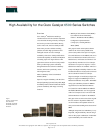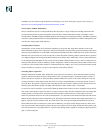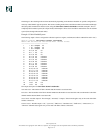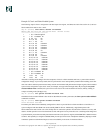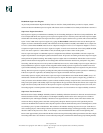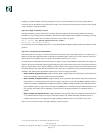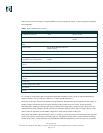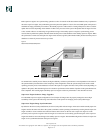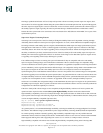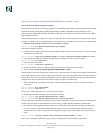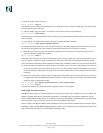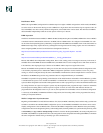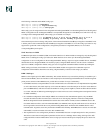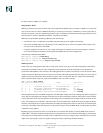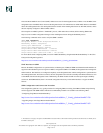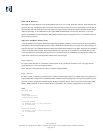
Cisco Systems, Inc.
All contents are Copyright © 1992–2002 Cisco Systems, Inc. All rights reserved. Important Notices and Privacy Statement.
Page 4 of 19
Example 2: Classic and Fabric-Enabled System
The following output is from a configuration with dual supervisor engines, one SFM, one classic line card in slot 3, and two
fabric-enabled line cards in slots 7 and 9.
Sup-A> (enable) show fabric channel switchmode
Module Num Fab Chan Fab Chan Switch Mode Channel Status
------ ------------ -------- ------------ --------------
1 1 0, 0 flow through ok
2 1 0, 1 truncated ok
3 0 n/a n/a n/a
5 18 0, 0 n/a ok
5 18 1, 1 n/a ok
5 18 2, 2 n/a unknown
5 18 3, 3 n/a unknown
5 18 4, 4 n/a unknown
5 18 5, 5 n/a unknown
5 18 6, 6 n/a ok
5 18 7, 7 n/a unknown
5 18 8, 8 n/a ok
5 18 9, 9 n/a unknown
5 18 10, 10 n/a unknown
5 18 11, 11 n/a unknown
5 18 12, 12 n/a unknown
5 18 13, 13 n/a unknown
5 18 14, 14 n/a unknown
5 18 15, 15 n/a unknown
5 18 16, 16 n/a unknown
5 18 17, 17 n/a unknown
7 1 0, 6 truncated ok
9 1 0, 8 truncated ok
15 0 n/a n/a n/a
16 0 n/a n/a n/a
Automatic switching mode changes allow the acceptance of classic or fabric-enabled cards into a system with no manual
configuration change. Aspreviously stated, thereis a performanceversus interoperability tradeoff when installingclassic line
cards into a fabric-enabled system. Becausemany network environments hold performance in higher regard, a fabric-enabled
system can be configured to reject classic cards (for example, not support flow-through mode). By issuing the set system
crossbar-fallback none command, the system will not start classic line cards installed in the chassis, thereby running in
compact switching mode (30 Mpps) only.
Sup-A> (enable) set system crossbar-fallback none
The default for the crossbar-fallback is bus mode. To determine the current system state, the show system crossbar-fallback
command is available.
Sup-A> (enable) show system crossbar-fallback
Cross-fallback: bus-mode
In summary, the SFM can be redundantly configured in a chassis to provide fabric-to-fabric and fabric-to-bus failover. A
system configured with dual SFMs can use the standby SFM for failover. Additionally, single SFM systems with
fabric-enabled line cards can fail over to the 32-Gbps bus for continuous operation. In both of these scenarios, recovery and
return to normal operation occurin less than threeseconds. This quick recovery timeallows for a switching modechange and
asynchronization processthat musttakeplace betweeneachline card,supervisorengine, andtheSFM fabricchannelsin these
scenarios. The capabilityto configure redundantSFMs provides up tothree levelsof backplaneredundancy, helpingto enable
continuous operations with minimal impact to network availability in the event of a hardware failure.



